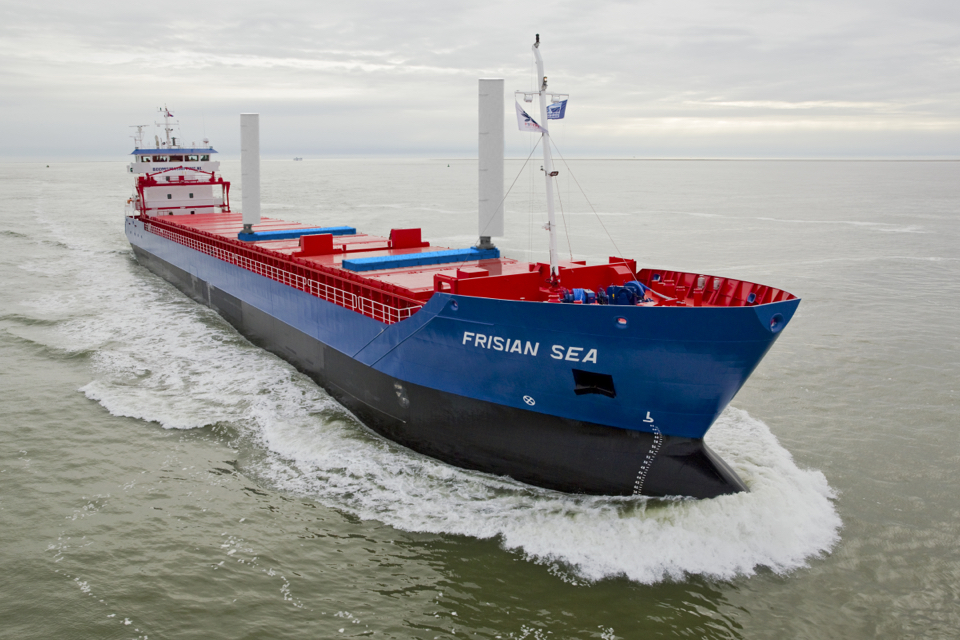Boomsma Shipping has contracted eConowind to install two of their wind-assist VentiFoil units on one of Boomsma’s vessels. New with these units is the Flatrack from which they unfold and which offers the flexibility of a container.
To comply with corona measures, the contract was signed via video conference.
‘We believe it is necessary and very important to accept sustainability challenges to reduce our environmental footprin,’ states Johan Boomsma, co-owner of Boomsma Shipping BV. ‘Together with the IMO decarbonisation goals for 2050, we want to do our part to reduce our fuel consumption and CO2 emissions as soon as possible.’
Wing foils unfold from Flatrack
The eConowind-units are both integrated in a specially designed Flatrack from which a folding VentiFoil can be deployed. These are ridged aspirated wing profiles acting as sails. The Flatrack is designed to optimise the handling of the VentiFoils.
Johan’s brother Ton Boomsma, co-owner and CTO of the company, says: ‘We selected a Flatrack solution as we expect that will give optimal results on our ship. The Flatrack units can be placed at different locations on the ship and can be handled with our hatch crane, thus giving us optimal flexibility.’
‘The new Flatrack design has the flexibility of a container, being movable by the hatch crane, needs limited installation time and has possibility for use on several vessels,’ adds Frank Nieuwenhuis, CEO of Econowind.
Boundary layer suction
Econowind designed the VentiFoils (wind assisted ship propulsion units) as optimal compact (non-rotating) wing profiles, creating superior thrust by means of the principle of boundary layer suction, for which ventilators are mounted inside the VentiFoils. Due to the generated thrust by the eConowind-unit, the thrust of the propeller can be reduced to maintain the same speed leading to fuel savings and emission reductions.
Ten per cent savings
‘With the help of the Wind Assisted Ship Propulsion (WASP) project, part of the EU Interreg North Sea region programme, we will install this innovative technology on one of our vessels and research the actual operations and monitor the savings, which are expected to be in the region of ten per cent,’ says Johan Boomsma.
Installation of the system is scheduled for September 2020, barring any delays given the current situation. The installation will then be monitored and evaluated throughout the rest of 2020 and 2021.








